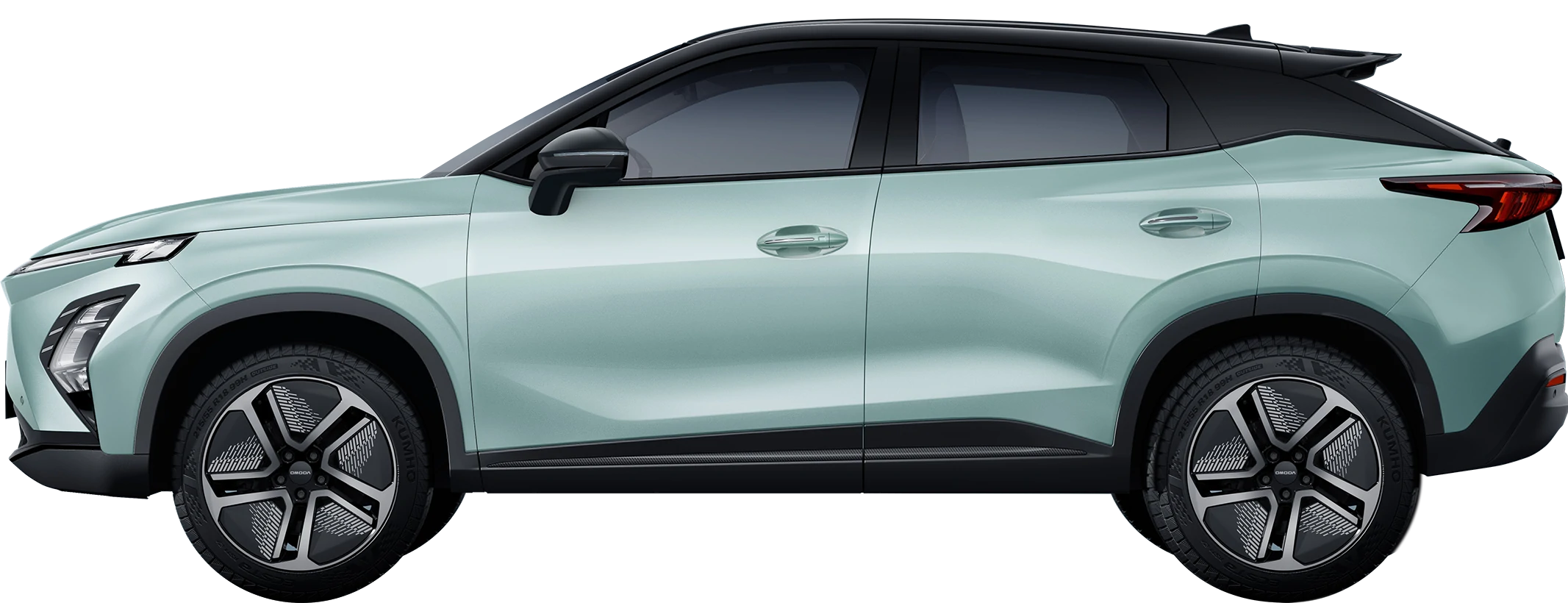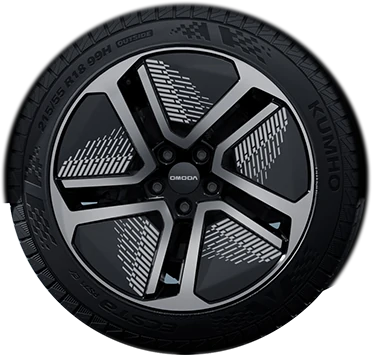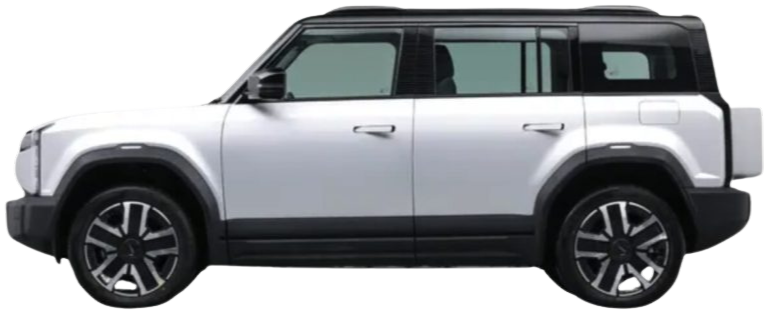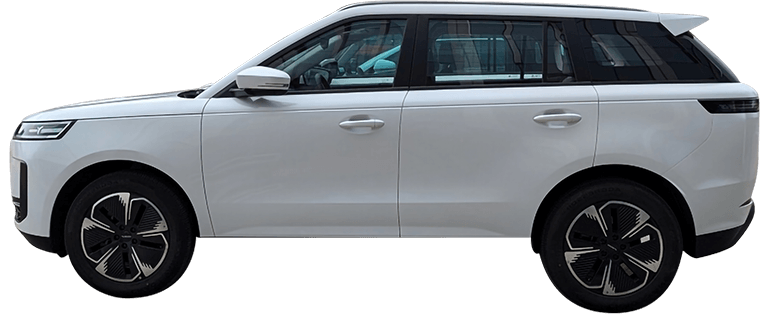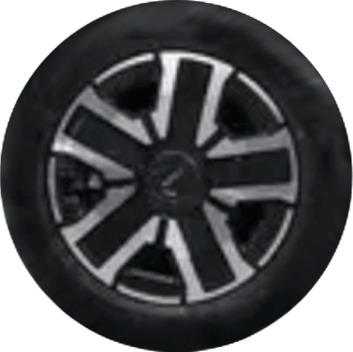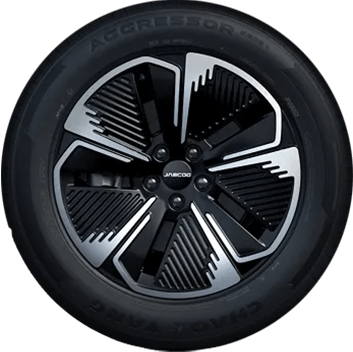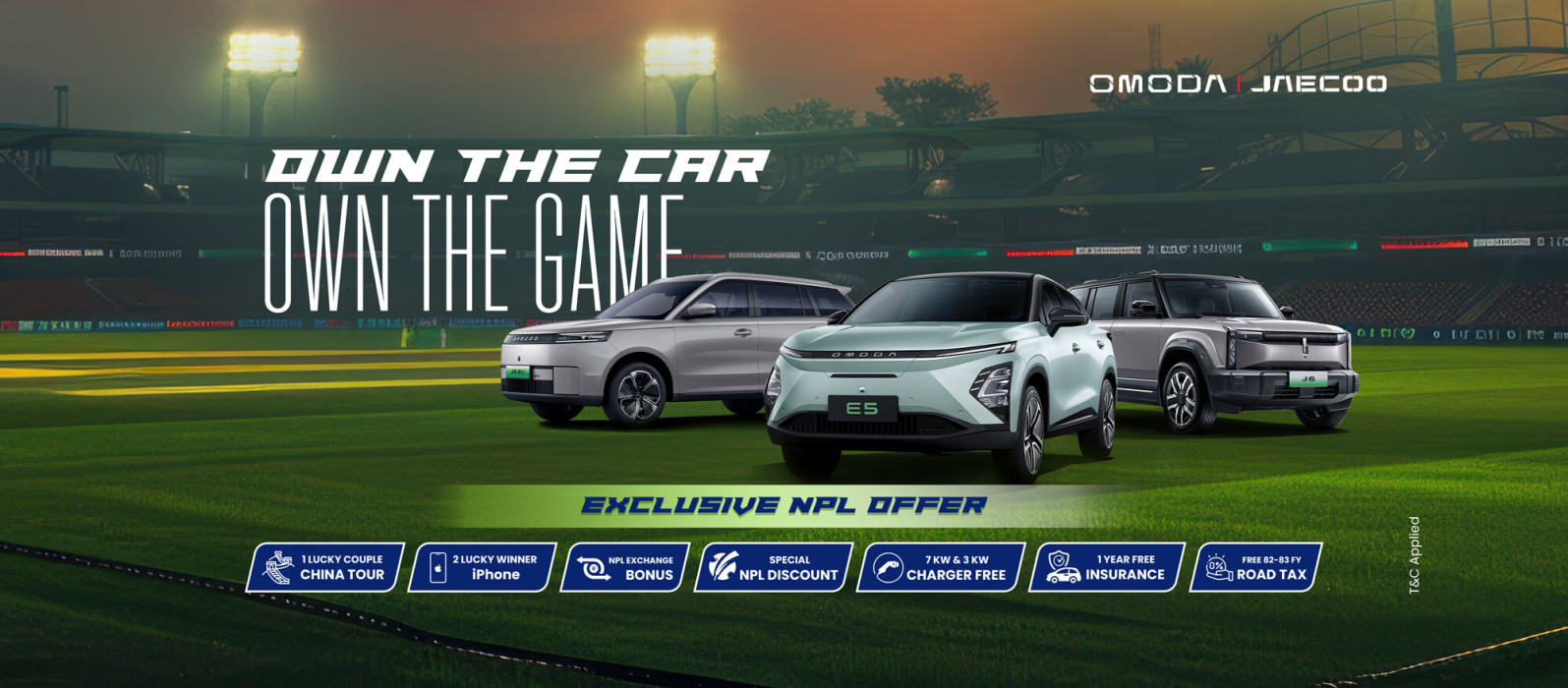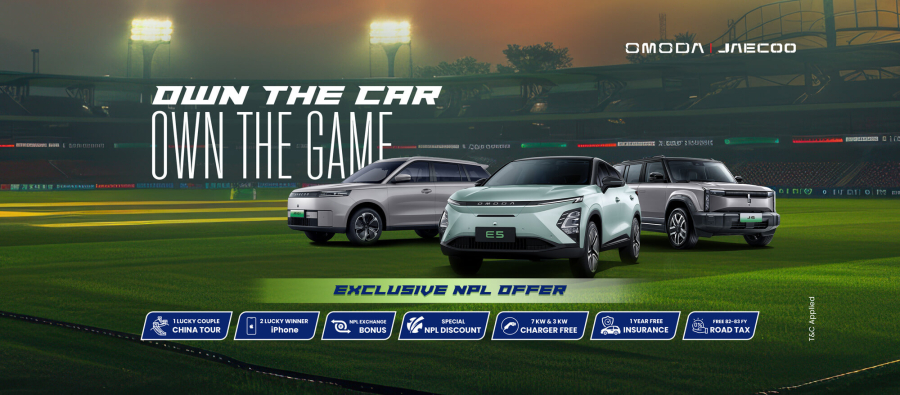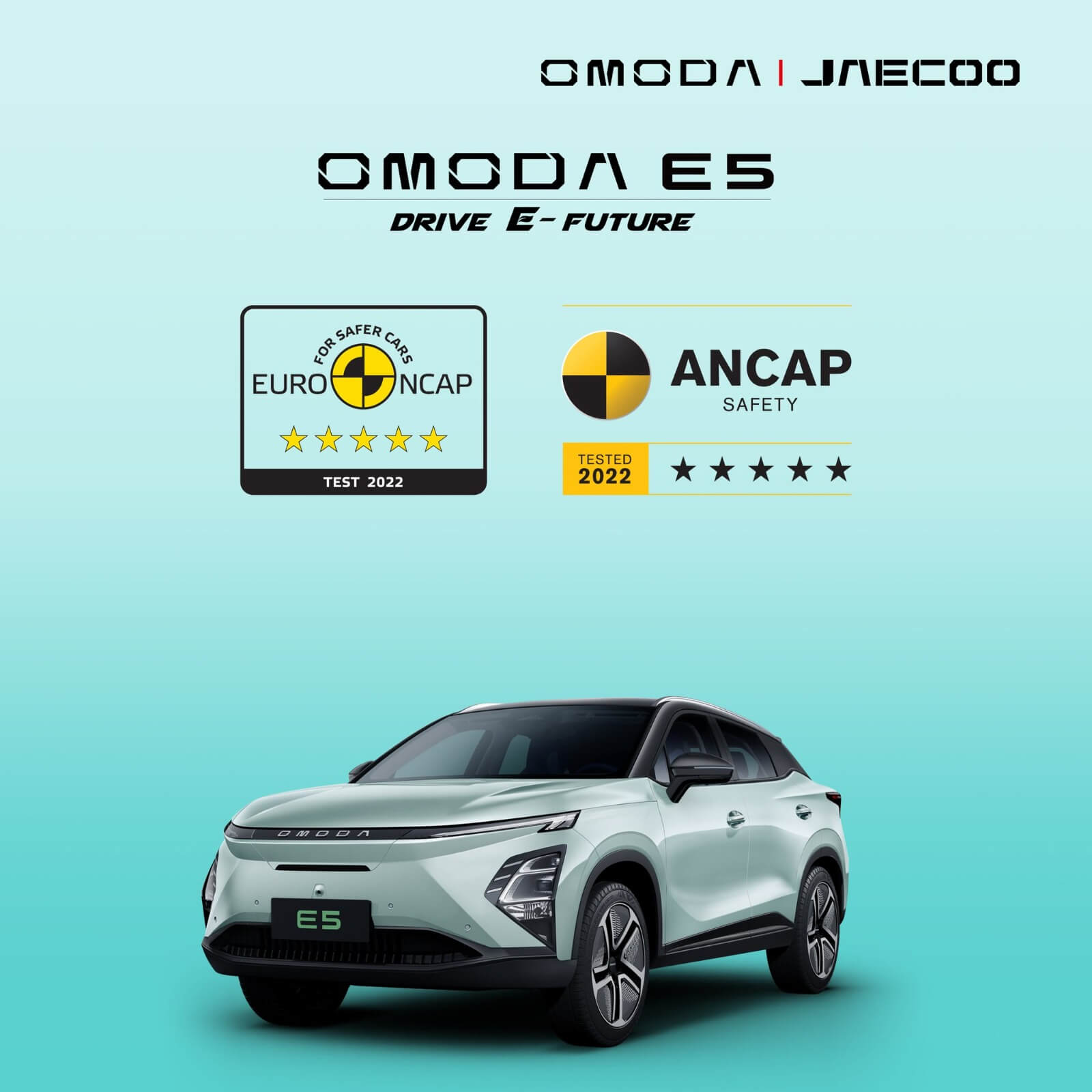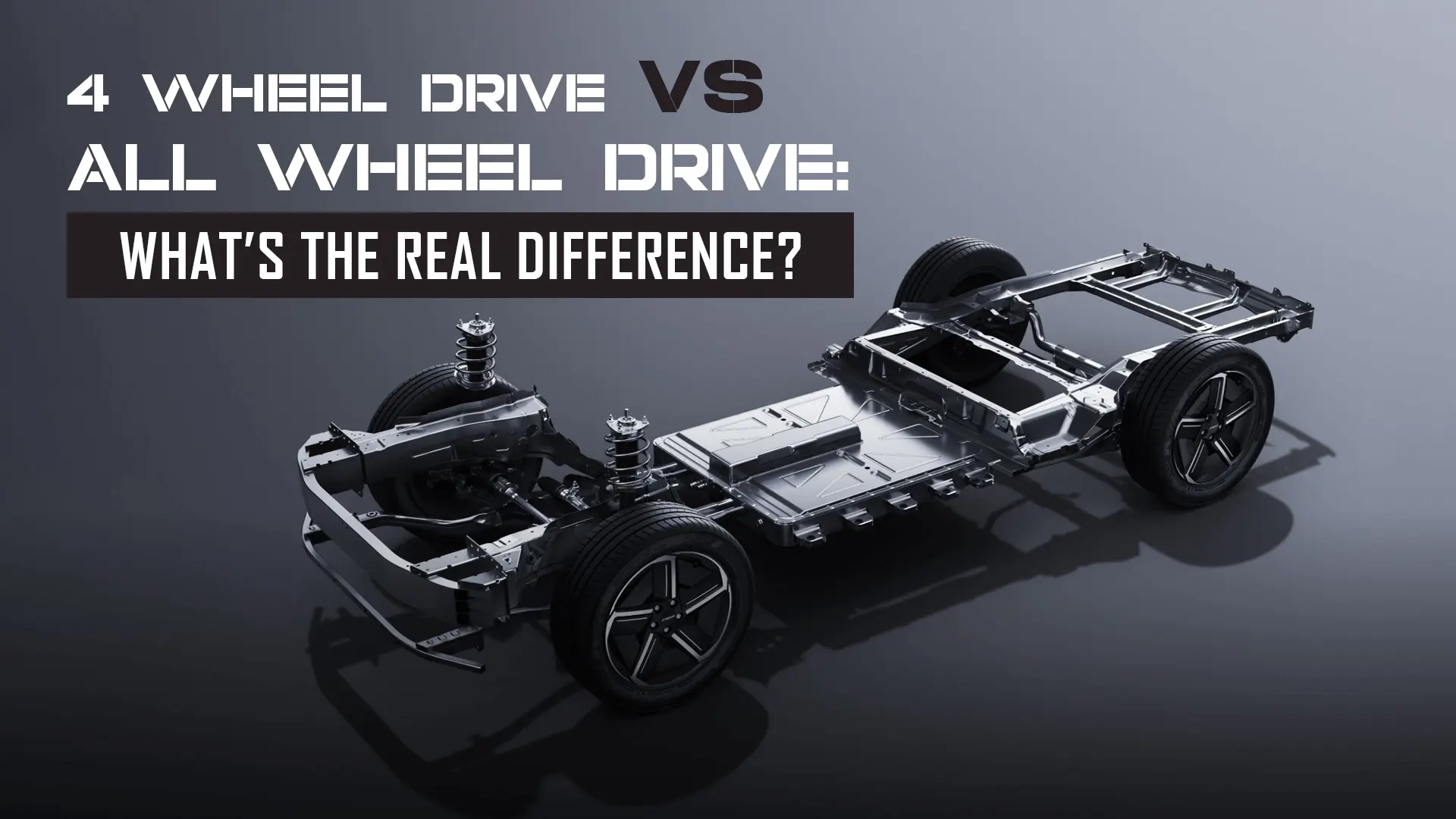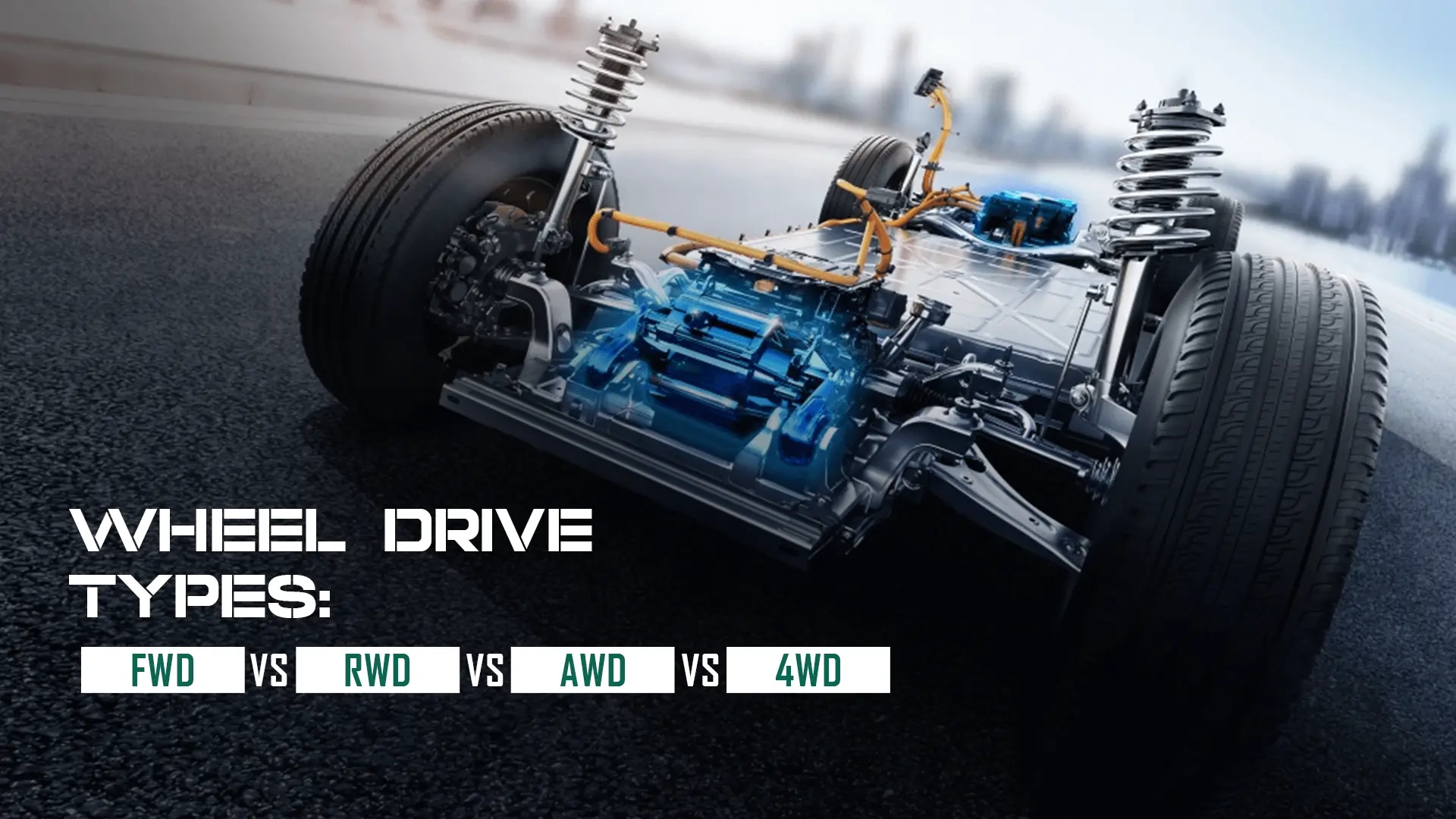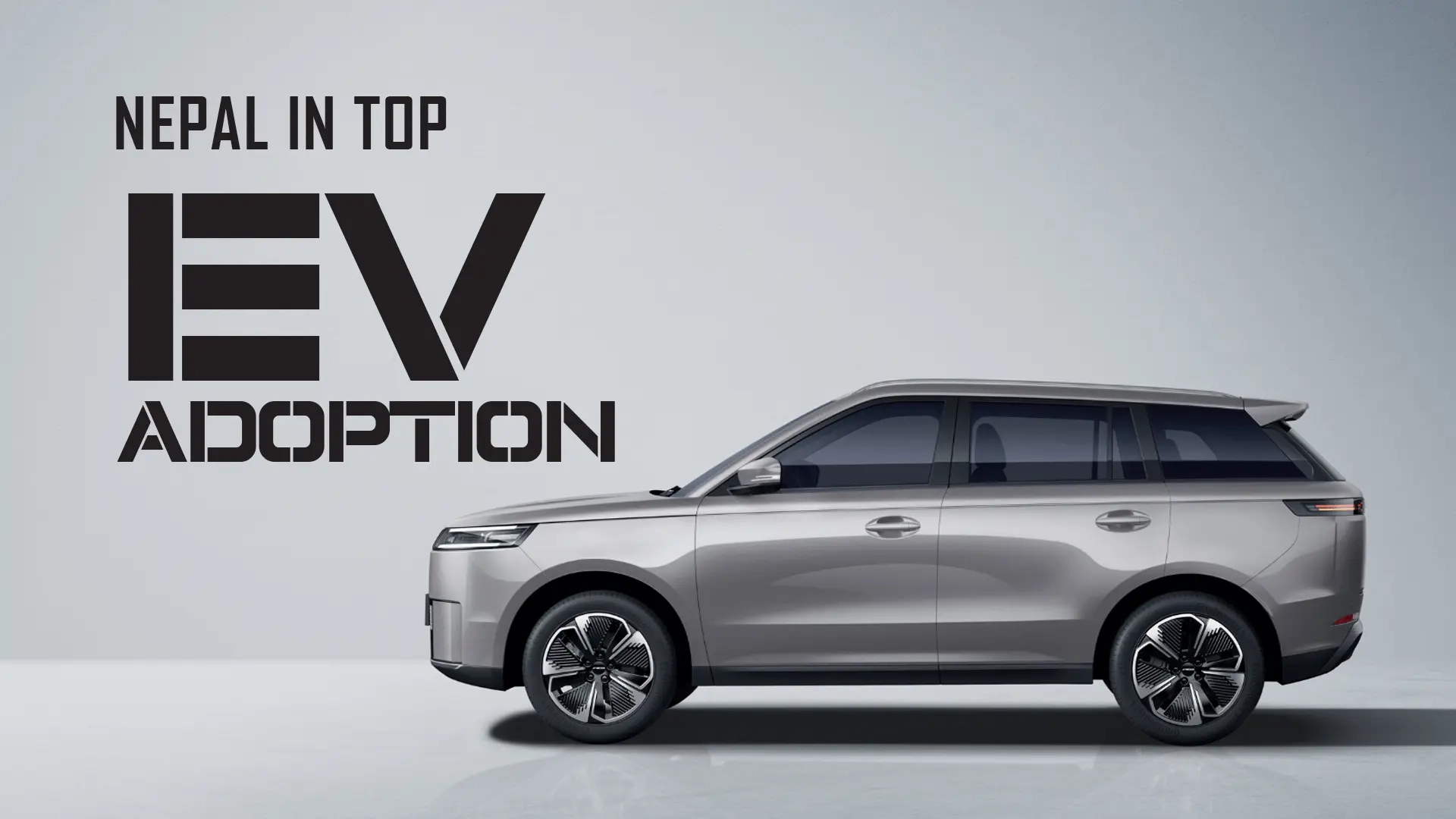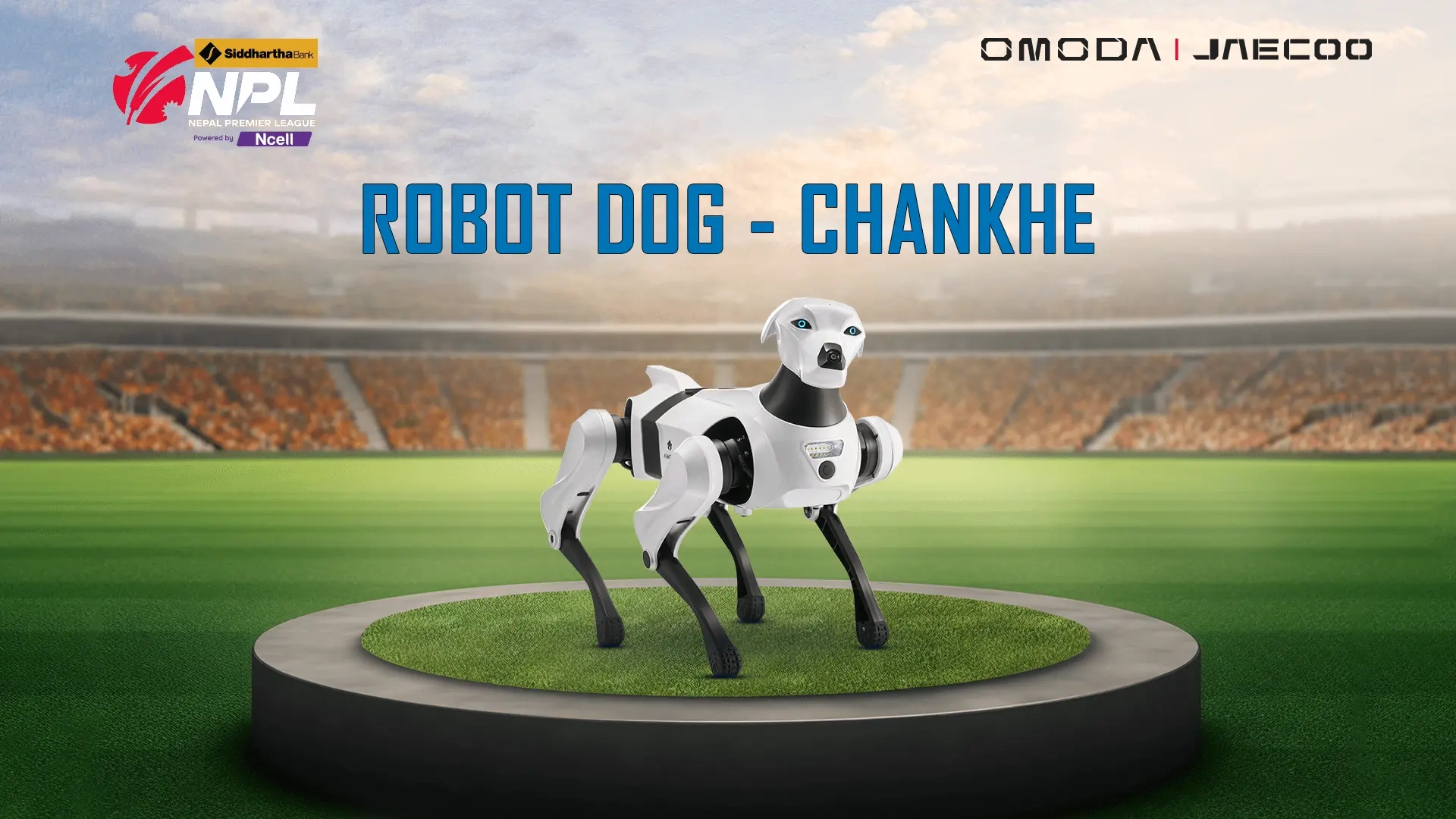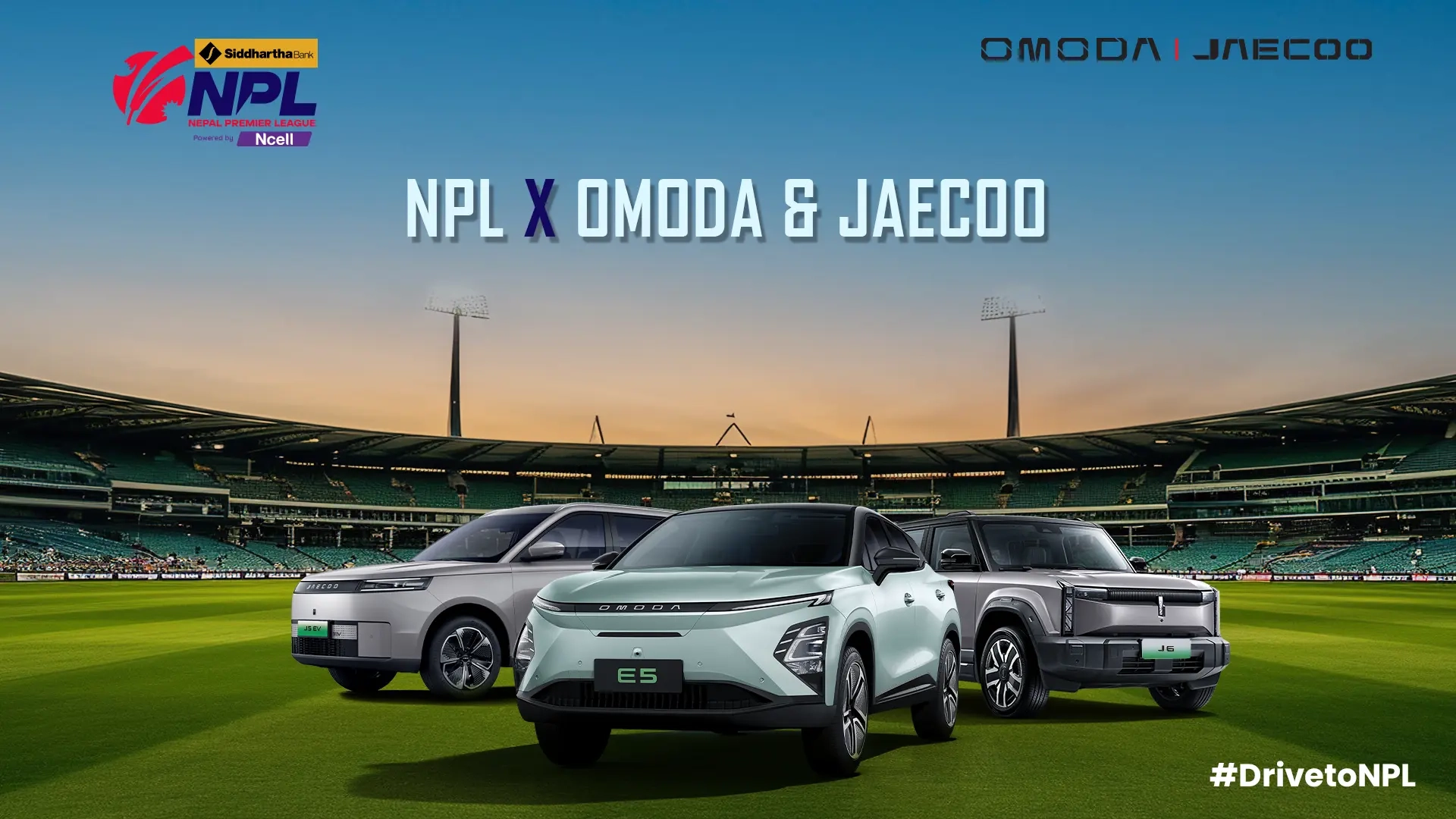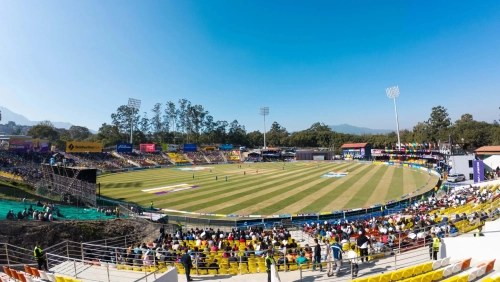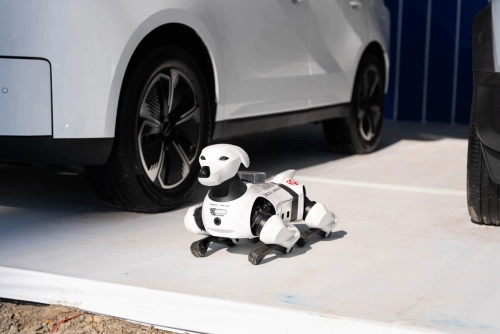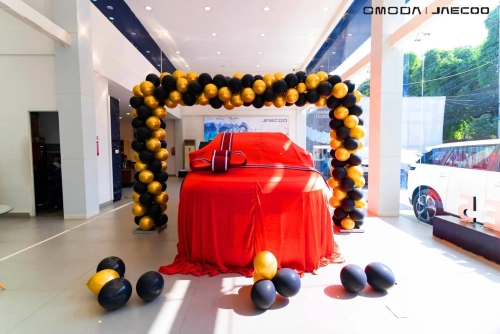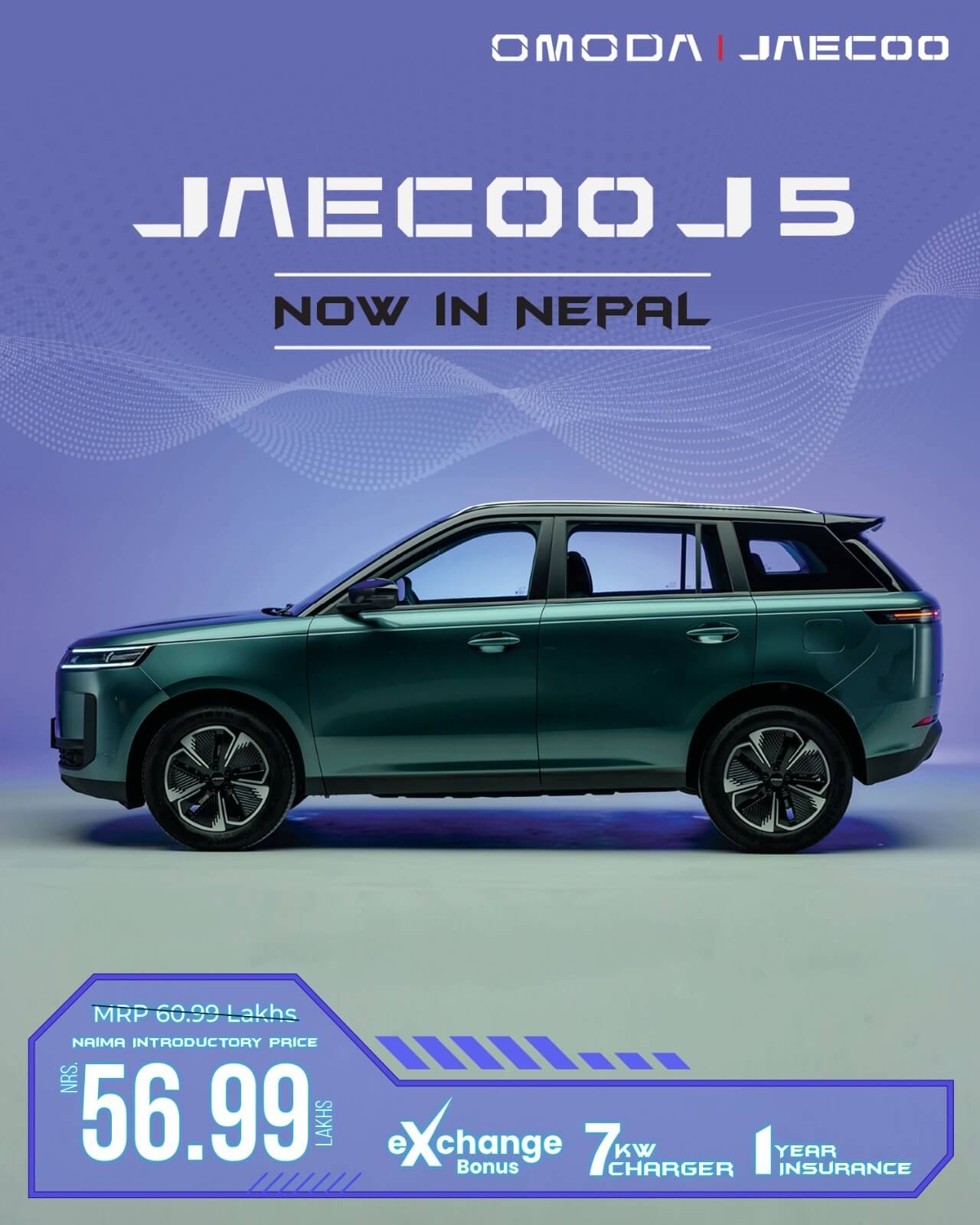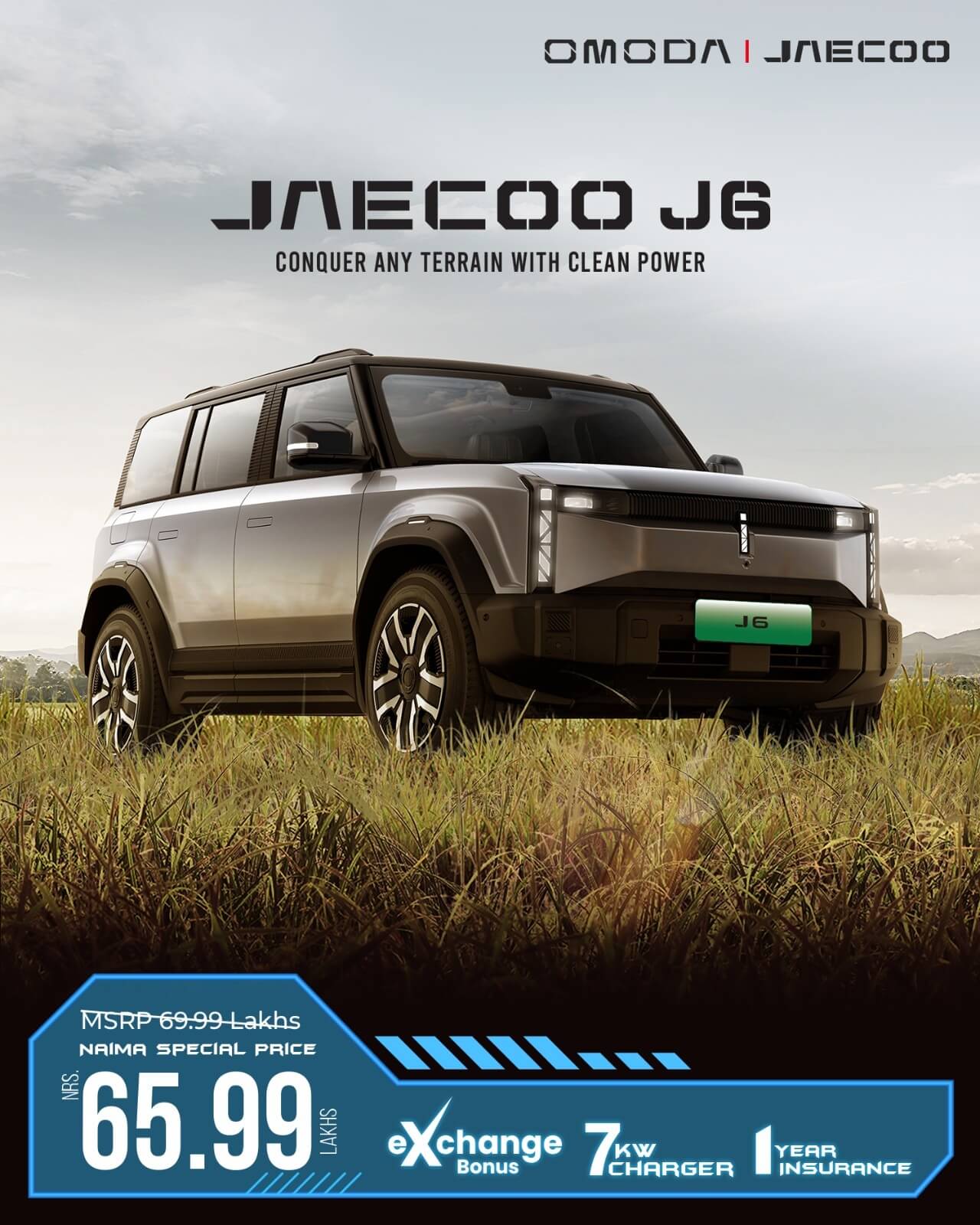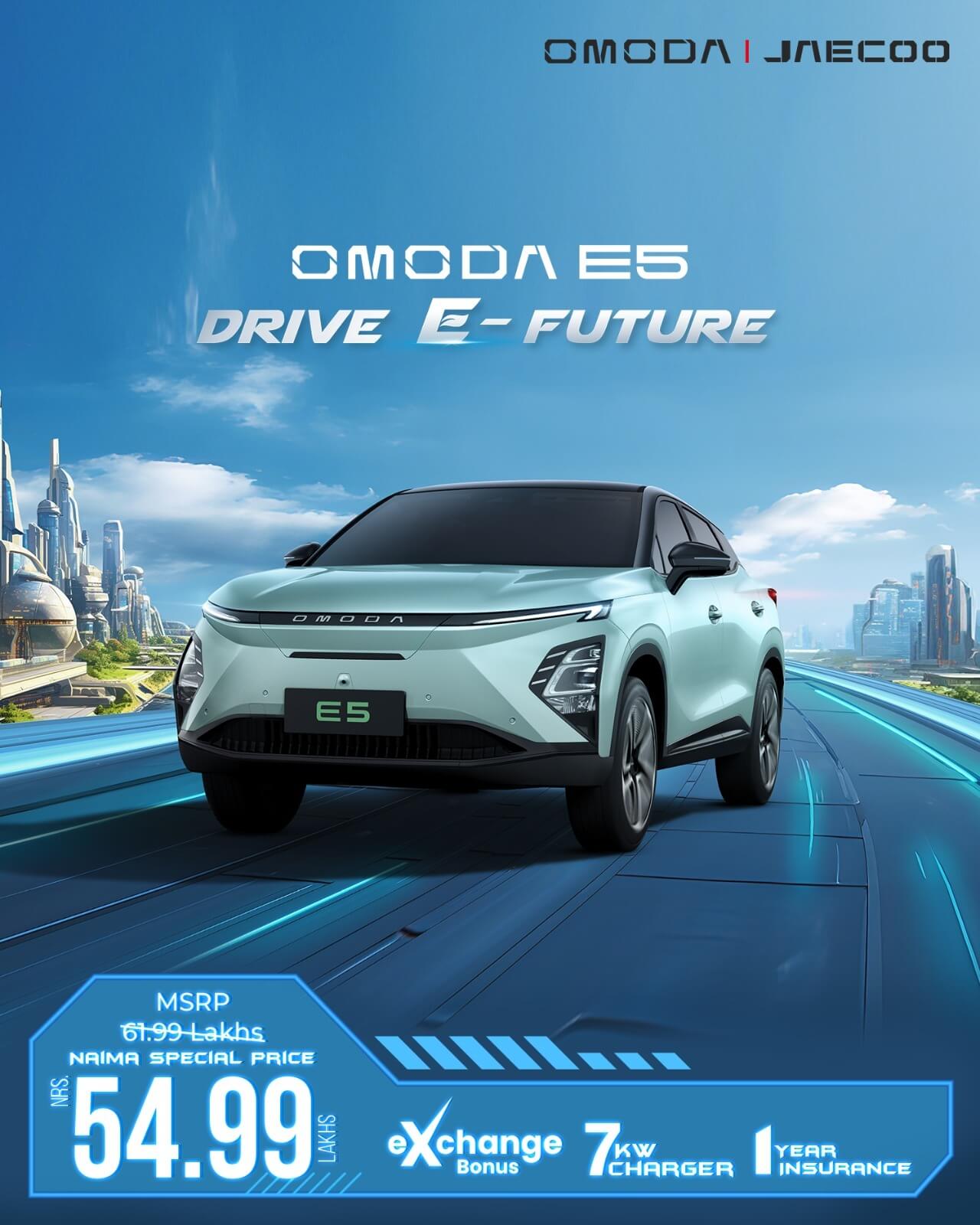
Meet Omoda & Jaecoo robot dog- The mechanical “good boy” stealing the spotlight at the Nepal Premier League Season 2
November 11, 2025
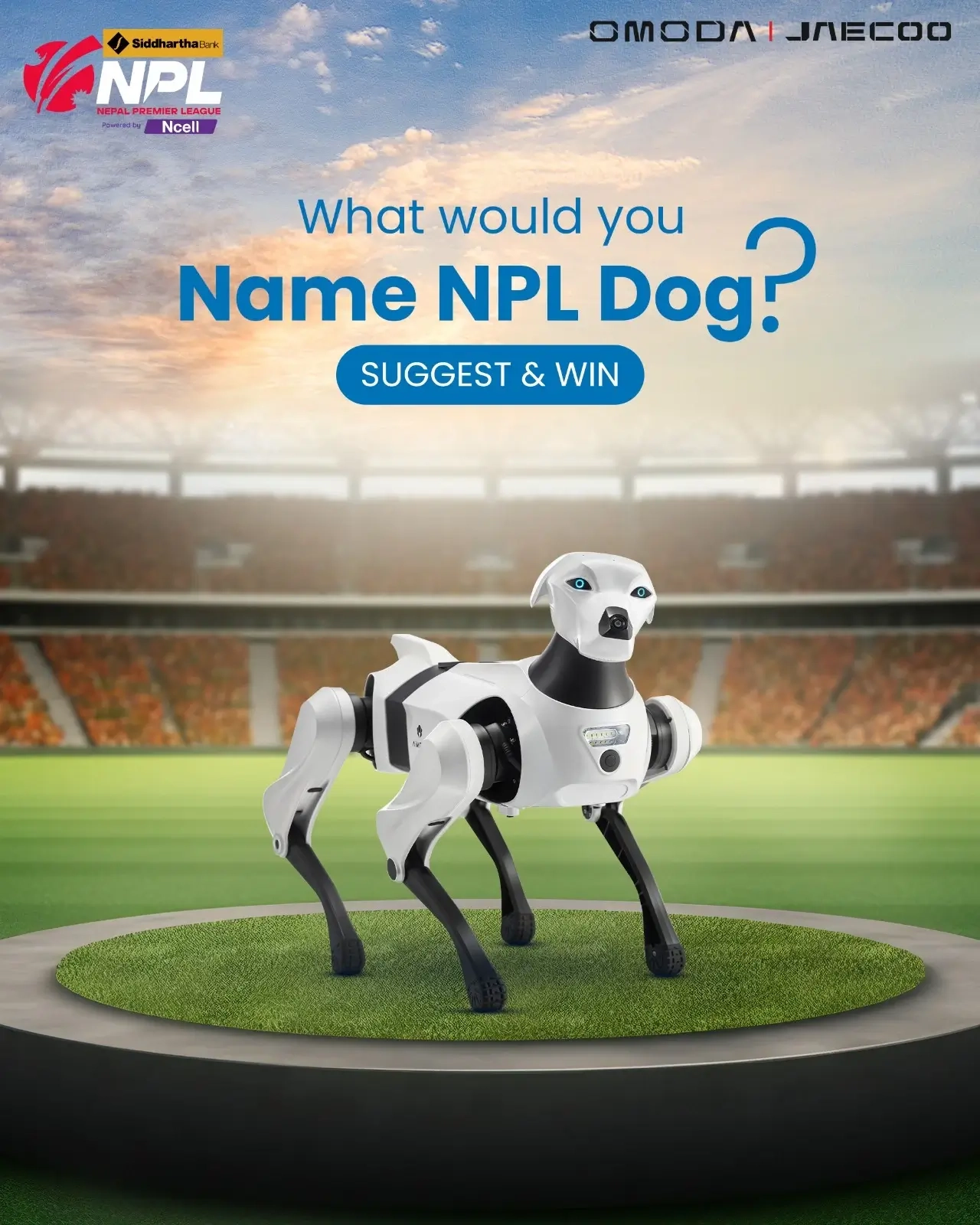
Meet Omoda & Jaecoo robot dog- The mechanical “good boy” stealing the spotlight at the Nepal Premier League Season 2
November 11, 2025
The AI-powered quadruped, equipped with a camera, adds a fresh perspective to the Nepal Premier League stealing hearts with its paw-someness.
Kathmandu 10th November 2025: The Nepal Premier League seems to have found – a four- legged AI powered robotic dog which will be expected to be the season’s multi entertainer for both fans and players from Omoda & Jaecoo Nepal. For the first time, the audience will be experiencing a robot dog in the field that can perform tasks and interact intelligently.
The loveable mechanical canine offers the latest cutting-edge addition to the NPL’s team making its first appearance in NPL Season 2. Omoda & Jaecoo demonstrated the ability to run, jump, and respond to various voice commands. A real dog look-alike fitted with a camera, the robot dog is designed to offer dynamic, on-ground visuals from the dog's eye view, bringing fans closer to the action in a new and immersive way.
The robot dog draws a clear inspiration from the quadrupeds designed by AiMOGA Technologies Pvt. Ltd. From Omoda & Jaecoo global. Omoda & Jaecoo Nepal has also called on fans to help name the robot dog, which will be a regular part of the broadcast team in subsequent matches. Fan votes will eventually name the robotic canine.
About SPG Automobiles Pvt. Ltd.:
SPG Automobiles Pvt. Ltd is the sole authorized distributor for Omoda & Jaecoo vehicles in Nepal. The company imports products like Omoda E5, Jaecoo J5, Jaecoo J6 and ICAUR to the Nepali market. For further information, please visit: https://omodajaecoonepal.com/

SPG Automobiles Pvt. Ltd. Launches Premium SUV Jaecoo J5 at NAIMA Mobility Expo 2025
August 13, 2025
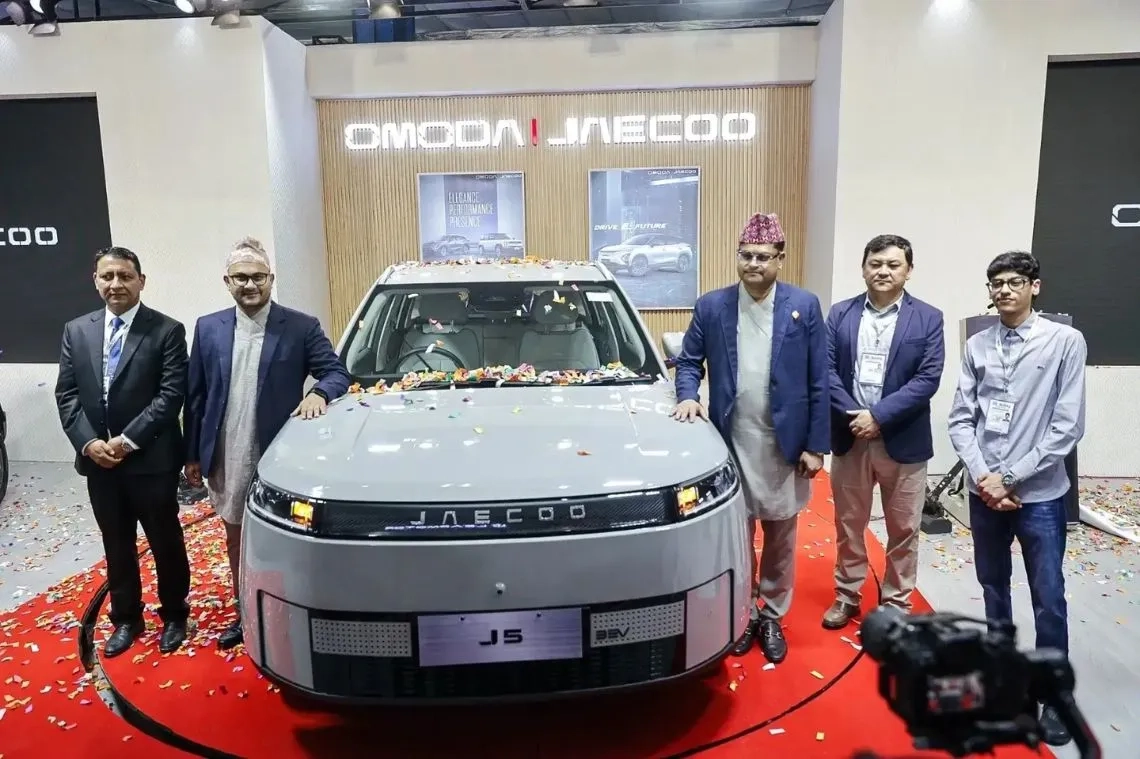
SPG Automobiles Pvt. Ltd. Launches Premium SUV Jaecoo J5 at NAIMA Mobility Expo 2025
August 13, 2025
Kathmandu, 6th August 2025 — SPG Automobiles Pvt. Ltd., the authorized distributor of Omoda & Jaecoo vehicles in Nepal, proudly unveiled the all-new Jaecoo J5 at the NAIMA Nepal Mobility Expo 2025, introducing a new era of premium SUV experience for the Nepali market.
Crafted to conquer both cityscapes and rugged terrain with design inspired by European ques, the Jaecoo J5 delivers an unmatched blend of performance, luxury, and design. Highlights include:
- Best-in-class ground clearance of 185 mm
- Segment-leading panoramic sunroof
- 18-inch spare tyre with alloy wheels
- Best-in-class driving range of 461 km
- Best-in-class boot space of 480 liters
The Jaecoo J5 is officially launched at MRP NPR 60.99 Lakhs, but as part of the NAIMA special offer, customers can book it at just NPR 56.99 Lakhs. In celebration of the NAIMA Mobility Expo 2025, SPG Automobiles has also introduced exclusive offers on the full range of Omoda and Jaecoo vehicles, including:
- Omoda E5 NAIMA Special Price – NPR 54.99 Lakhs (Official Price NPR 61.99 Lakhs)
- Jaecoo J6 NAIMA Special Price – NPR 65.99 Lakhs (Official Price NPR 69.99 Lakhs)
All customers booking any Omoda or Jaecoo model during the NAIMA Mobility Expo will receive an exclusive offer and deals in the entire Omoda & Jaecoo line-up. Customers can be benefited from this offer while visiting the NAIMA Mobility Expo 2025 Hall B, stall no. L2 at Brikutimandap, Kathmandu from 6th August – 10th August 2025.
About SPG Automobiles Pvt. Ltd: SPG Automobiles Private Limited is the authorized distributor for Omoda & Jaecoo in Nepal. For further information, please contact SPG Automobiles or visit Omoda & Jaecoo showroom near you. For further information, please visit: https://www.omodajaecoonepal.com/

OMODA & JAECOO Announces Nationwide Monsoon Check-Up Camp, Monsoon Special Vehicle Care
July 09, 2025
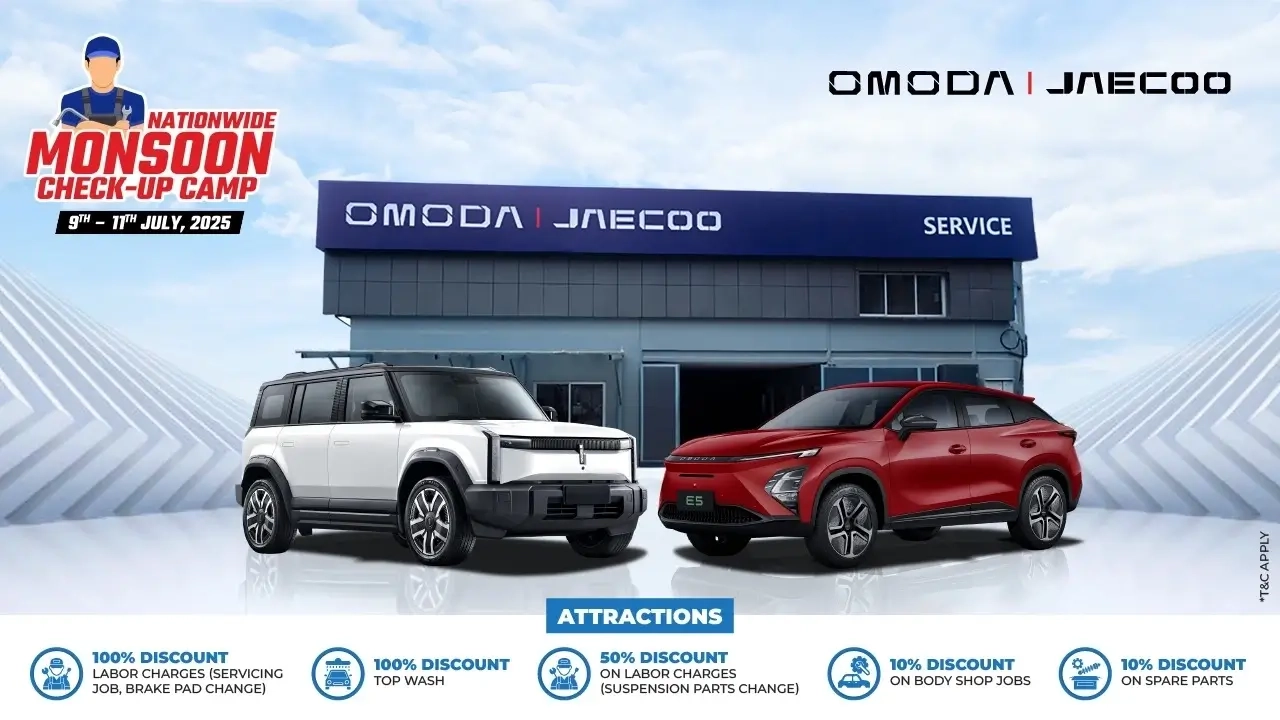
OMODA & JAECOO Announces Nationwide Monsoon Check-Up Camp, Monsoon Special Vehicle Care
July 09, 2025
Kathmandu, 4th July 2025: SPG Automobiles Pvt. Ltd., the authorized distributor of OMODA and JAECOO vehicles in Nepal, is pleased to announce a “Nationwide Monsoon Check-Up Camp” during the monsoon season. This exclusive service campaign will run from 9th to 11th July 2025, offering a range of benefits to valued customers across Nepal. The Monsoon Check-Up Camp aims to provide comprehensive vehicle inspections and maintenance services to prepare OMODA and JAECOO owners for the challenging weather conditions.
Customers can take advantage of several attractive offers, including a 100% discount on labor charges for servicing jobs and brake pad changes, ensuring a smooth and safe ride. Additionally, a 100% discount on top washes is available to keep vehicles pristine. For necessary replacements, customers will receive a 50% discount on labor charges for suspension parts changes. Furthermore, the camp offers a 10% discount on body shop jobs to address any minor body damage and a 10% discount on spare parts, making essential repairs more affordable.
The check-up camp will be held simultaneously at 12 different authorized service checkpoints nationwide, making it convenient for customers to access the official OMODA & JAECOO service close to them. These checkpoints include Sitapaila (SPG Automobiles) and Bhaktapur (Pariwar Car Clinic) inside the valley and Birgunj (Darshi Automobiles), Butwal (Siddhi Vinayak Motors), Nepalgunj (Devmangal Engineering), Chitwan (United Auto Concern), Dhangadi (Navadurga Technology), Pokhara (Elite Motors), Itahari (Pathibhara Auto), Birtamode (OP International), Dang (NL Moto Corp), and Surkhet (Butwal Verity) outside the valley.
Customers are encouraged to visit their nearest authorized service center during the campaign period to ensure their OMODA and JAECOO vehicles are monsoon-ready and to avail the benefits of these exclusive offers.
About SPG Automobiles Pvt. Ltd:
SPG Automobiles Private Limited is the authorized distributor for OMODA & JAECOO in Nepal, committed to providing high-quality vehicles and exceptional after-sales service. For further information, please contact SPG Automobiles or visit https://www.omodajaecoonepal.com/

